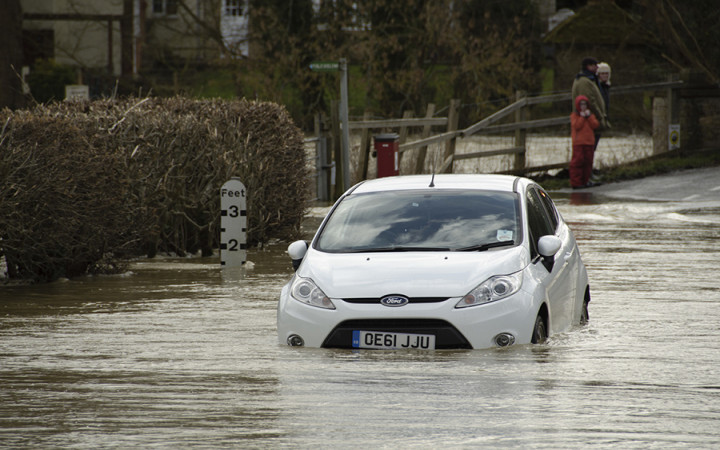Today’s Wonder of the Day was inspired by Janice. Janice Wonders, “What is a flash flood?” Thanks for WONDERing with us, Janice!
When you wake up in the morning and see that it's raining outside, how do you feel? Are you grateful for rain that will help the grass grow and plants flourish?
Or are you angry because you will likely get wet on your walk to the bus stop? You might also be worried that your soccer practice after school might get canceled.
Some people don't mind rainy days, while others wish for constant sunshine. There's no doubt that we need rain, but many people would like to control how much falls and when.
If it were up to many people, it would only rain in the middle of the night. Plus, it would only rain enough to provide enough water for plants to thrive and water supplies to replenish.
Unfortunately, we can't control the weather. Sometimes it'll rain all day long and cancel our plans. At other times, it'll rain so much that we might be threatened by dangerous floods.
A flood occurs when normally dry land is overtaken by water. They're the most common natural disaster, occurring in every state and threatening any part of the world that receives rain. In fact, floods kill more people in the United States each year than lightning, hurricanes, or tornadoes.
Sometimes floods occur slowly over a number of days, weeks, or months, as precipitation levels across hundreds of miles cause river levels to rise slowly. At other times, however, floods can happen in a matter of hours. We call these events flash floods.
Flash floods are defined as floods that occur within six hours of heavy rainfall or another cause. However, flash floods can sometimes happen within minutes or just a few hours of a heavy rain.
Flash floods are particularly dangerous because they combine a flood's normal potential for damage with unpredictability and a rapid time frame. During a flash flood, normally dry creeks and river beds can fill with water and overflow before people have time to react.
Heavy rainfall isn't the only potential cause of a flash flood. Melting snow and ice jams in mountain streams can send torrents of water unexpectedly into low-lying areas. Likewise, dam failures can send walls of water downstream without warning.
Certain areas are prone to flash flooding because of a variety of conditions. For example, urban areas can be dangerous because the construction of buildings, highways, and large parking lots reduces the amount of soil available to absorb heavy rains.
Areas near rivers and large streams are also prone to flash flooding, since heavy rains will naturally find their way to established waterways. Deep canyons and other areas near mountains and steep hills can be deadly when the surrounding topography produces rapid runoff that can flood normally dry areas in a matter of minutes.
Thanks to modern technology, the National Weather Service is able to issue alerts when flash floods may be likely to occur. A flash flood watch indicates that conditions are favorable for a flash flood. A flash flood warning, on the other hand, advises that a flash flood is either imminent or already occurring.




